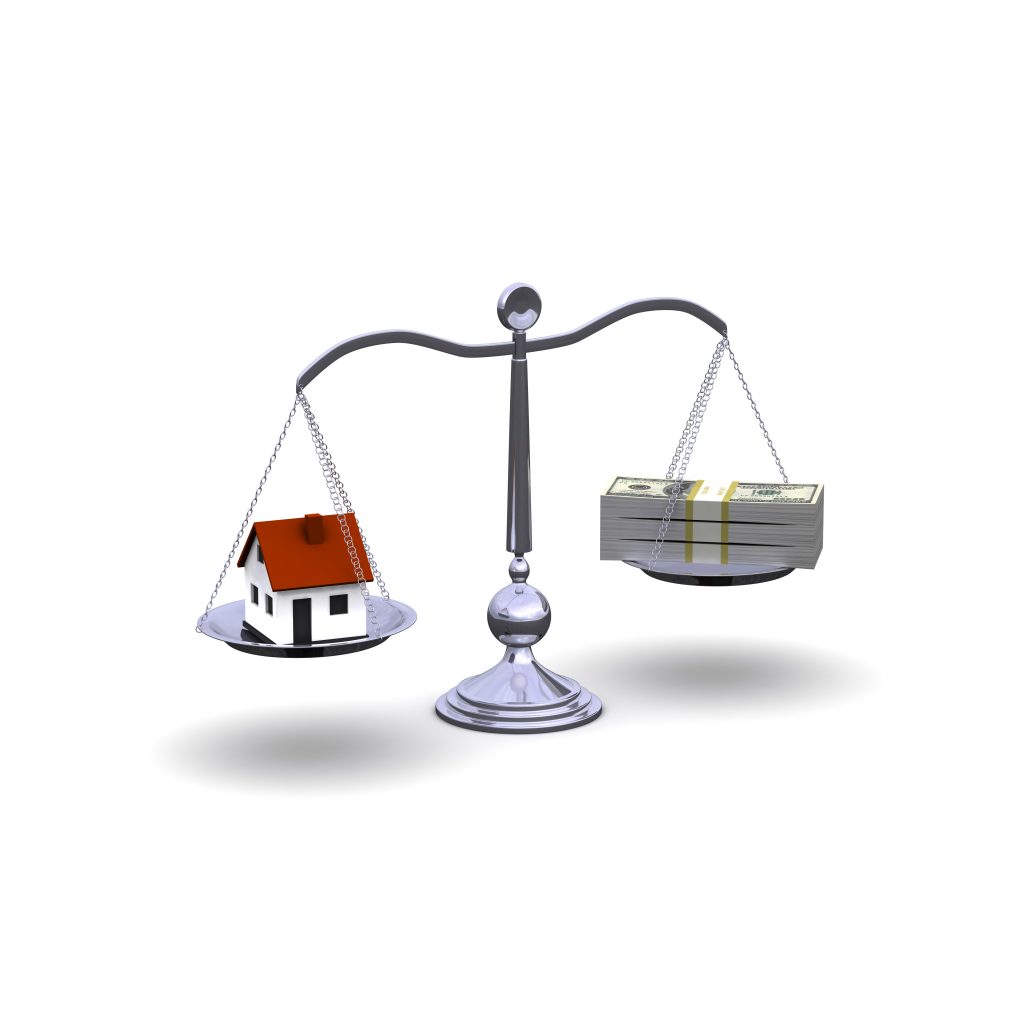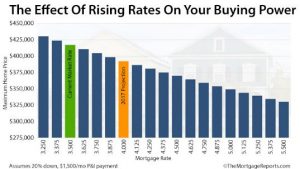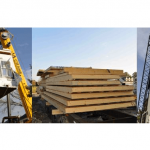Why Waiting to Build Means More Risk with Rising Interest Rates


The Period of Super-low Interest Rates May be Coming to an End
Regardless of your political bent, things have changed. The Federal Reserve has managed the economy for the last eight years by holding its rates at unprecedented lows for an unprecedented timeframe. That is about to change. No matter what you believe, the market seems to believe that the new President’s promises, if delivered on, will stimulate stronger economic growth and trigger higher inflation. As a defense against the inflationary part, they have announced that this year they may implement up to three interest rate increases. While the Fed Rate isn’t the mortgage rate, the psychological impact on the mortgage interest rate is real.
Settling for Less Home
The mortgage rate actually plays a big part in how much your lender will lend you to build your new home. Because of this, it has a huge impact on how much home you can buy. It actually has much more of an impact than you might think. The actual interest rate has already jumped about a half of one percent since this election. Imagine if it jumps another half of a percent in the first half of 2017.
 To illustrate, a basic mortgage calculation shows about a 12 percent loss in purchasing power from a one-percentage point rise in mortgage rates. So, if a person takes out a $200,000 loan and is using a 30-year fixed rate mortgage at 3.75% rate, they would be looking at about a $926 monthly payment (principal and interest only). If the rate jumps to 4.75% and they have to keep the same monthly payment, the most loan they can qualify for is now $177,500. Their purchasing power has just been cut by $22,500. What does that mean to an average buyer? They now can’t afford the upgraded kitchen, the 2 car garage or the cozy breakfast nook option that they had their heart set on, all because they waited too long before they made the decision to build their new home.
To illustrate, a basic mortgage calculation shows about a 12 percent loss in purchasing power from a one-percentage point rise in mortgage rates. So, if a person takes out a $200,000 loan and is using a 30-year fixed rate mortgage at 3.75% rate, they would be looking at about a $926 monthly payment (principal and interest only). If the rate jumps to 4.75% and they have to keep the same monthly payment, the most loan they can qualify for is now $177,500. Their purchasing power has just been cut by $22,500. What does that mean to an average buyer? They now can’t afford the upgraded kitchen, the 2 car garage or the cozy breakfast nook option that they had their heart set on, all because they waited too long before they made the decision to build their new home.
Can Rising Interest Rates Increase Home Prices?
The example above demonstrates that higher interest rates make building a new home less affordable because the same income purchases less because of the higher interest rate. The impact of this on existing homes means that potential buyers still expect to buy the same house for the same money meaning housing prices should fall. While many people believe the two are correlated, it actually isn’t true.
Related: 10 POINTERS TO BOOST YOUR CREDIT – QUALIFYING FOR A CONSTRUCTION LOAN
The bottom line, however, is that other factors have a bigger impact on home prices than mortgage rates. One of them is a stronger economy. As the economy improves, housing prices tend to rise at a faster rate. The catch is, that as the economy improves, the Fed fears inflation and can cause its rates to increase. There are many factors involved that impact rising house prices. Just be aware that as the economy improves and interest rates rise, higher prices and lower purchasing power aren’t working in the home buyers favor. “We anticipate that rates may be 4.5 percent by the end of 2017,” said Lawrence Yun, chief economist for the National Association of Realtors (NAR) “and that home prices will also march upward by 4 percent.”
Don’t Waste Time While You Plan Your New Home
If you start planning to build your new home today, it will take from one to three months, on average, and sometimes longer to have everything in place and ready to submit to a lender. Use this time wisely. Your credit score plays a big part in the interest rate for your home loan. Most people don’t even know what their credit score is until they begin to shop for a mortgage.
Learn your credit score and improve credit score. It can have a big impact on your interest rate and you have some ability to control it. With some lenders it can mean as much as a half of a percent off of your rate. Take the time now to learn what you need to do to have the absolute best credit score when you go to a lender. And just because you get approved for a loan, don’t prematurely do something that could change your credit standing. You can buy that new furniture or get that new car… just do it after you move into your new home. Until all the paperwork is done, a lender can do a review to insure nothing has changed in your credit history from when the loan was initially approved.
What is the Risk of Waiting?
Along with home mortgages, higher rates could increase the interest on credit card payments and auto loans. The Fed hopes that cooling the consumer’s appetite to buy will slow down inflation. In 2012 housing prices were falling and interest rates continued to fall. Buyers tried to time the market and waited for rates to bottom out and missed a tremendous opportunity to build their new home because prices recovered right before rates recovered to their current level. This current period for interest rates is possibly a narrow window of opportunity to still get a historically low interest rate and at the same time get the best value when building your new home.
The post Why Waiting to Build Means More Risk with Rising Interest Rates appeared first on Impresa Modular.




